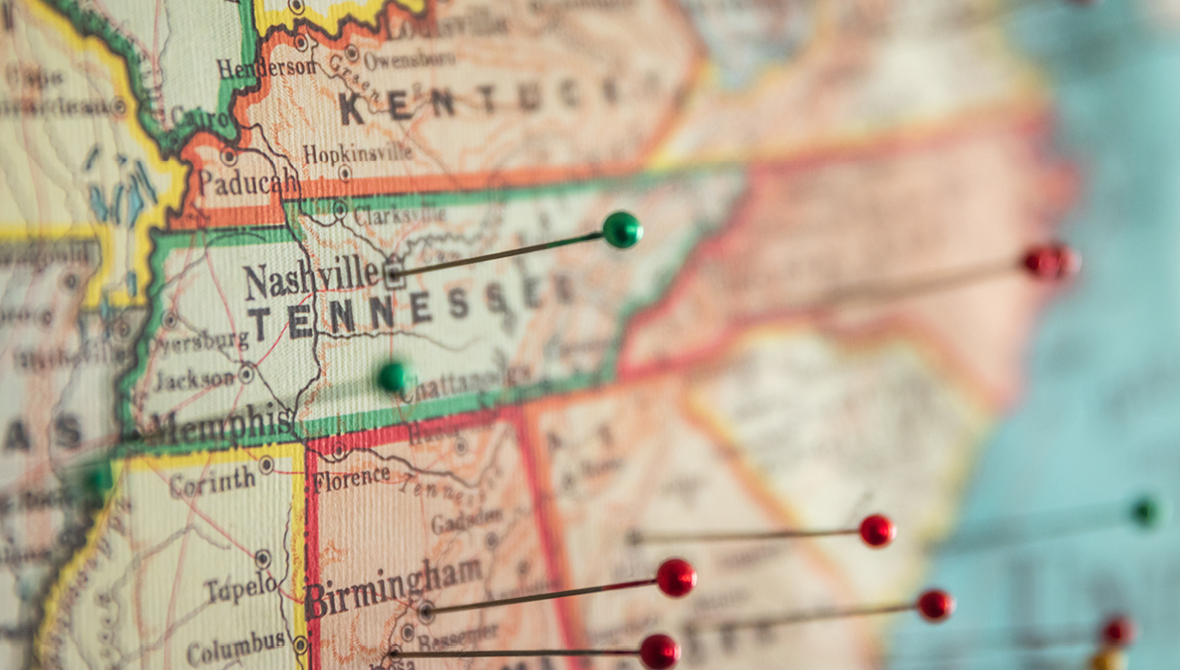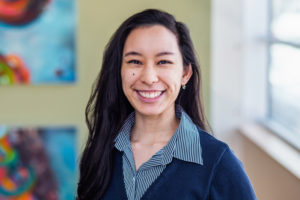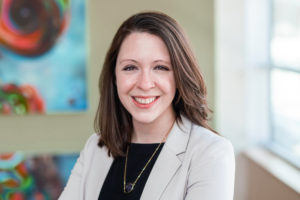A Wake-Up Call for Investing in the South


 This article was first published in our 11 Trends in Philanthropy for 2024 report. Explore the full report here.
This article was first published in our 11 Trends in Philanthropy for 2024 report. Explore the full report here.
Want the latest trends, research, and more delivered right to your inbox? Subscribe to the Johnson Center email newsletter.
The U.S. South* is experiencing a boom.
Nine of the 15 fastest-growing large cities in the country (populations of 50,000 or more) are located in Texas and Florida (U.S. Census Bureau, 2023). More than half of Black Americans (56%) live in the South (Tamir, 2021). As a region, it is home to the fastest-growing Latino (Zong, 2022) and Asian American (Devarajan, 2023) populations in the country.
Following the 2020 Census, the region picked up three electoral votes — bringing its total to 191, well more than half of what a presidential candidate would need to secure the election (U.S. Census Bureau, 2021). And while most states are still recovering from the COVID-19 pandemic (Plyer et al., 2023), Southern states are seeing indications of growing economies (Sasso & Tanzi, 2023; Frey, 2022; Highlander Research and Education Center, 2019).
While institutional philanthropy has typically overlooked the South (Grantmakers for Southern Progress, n.d.; Daniels, 2021), recent figures indicate positive progress in grantmaking. Data from Candid (2023) indicate a 51% increase in overall giving to the Southeast region from 2014 to 2019 — more than all other regions combined (13%). For example, giving has more than doubled in several priority areas, such as human rights ($136 million to $333 million) and community and economic development ($480 million to $1.1 billion).
These gains represent strong philanthropic investments in the region, but they will require sustainable commitments over time to keep up with growing need and the compounding effects of historical underinvestment. That said, dollars are not the only force that moves the philanthropic sector: people do, too. The Ford Foundation (2021a) observed,
From Texas to Mississippi to Virginia, the South has long been an incubator for social change. … And its legacy of abolition, reconstruction and desegregation is alive today … Advocates and organizations across the South are at the forefront of many of America’s fights for civil rights, from reproductive justice and voting rights to transgender equality and workers’ rights (para. 2).
Many of the debates at the center of our nation’s “culture wars” are playing out in Southern communities, increasing the spotlight on intersectional issues and efforts, and drawing both people and funding to regional initiatives. Much of this work is fundamentally grassroots, conducted by nonprofits, collaboratives, and groups of committed individuals without a formal status. Tracking its growth is difficult, but its achievements are obvious to those impacted by their work.
Groups like the Southern Movement Assembly, Black Voters Matter Capacity Building Initiative, New Disabled South, and others fall into this category of vibrant regional projects that are drawing attention — building coalitions, advocating for policy and systems change, and helping to drive significant new support to the South.
In this article, we use the term “South” to refer generally to the region, however, it is defined by the organizations from which we take our data and evidence.
In 2017, the National Committee for Responsive Philanthropy and Grantmakers for Southern Progress published As the South Grows, a four-part series detailing the activities of Southern nonprofit and community leaders and calling on philanthropy to step up their support. Institutional philanthropy is increasingly recognizing this activity — its leaders, networks, and undeniable impact. Support for increasing both grantmaking and impact investing in the South is on the rise (Schlegel & Peng).
Authors for NPQ (Warren, 2018) and Inside Philanthropy (Ramirez, 2023) have pointed out the importance of place-based and rural funders in the region, and many of the most recent commitments have their antecedents in 2020.
The Southern Power Fund has moved $18.4 million to 375 entities across the South and Puerto Rico since November 2020 (n.d.).
The Ford Foundation announced $75 million (including $36 million raised via its historic social bond initiative) in new grantmaking for the South in June 2021. The commitment nearly doubles Ford’s regional investment since 2016 (2021b).
Since its founding in 2019, the Hive Fund for Climate and Gender Justice (a philanthropic intermediary) has moved more than $50 million to organizations working to transition the region to clean, renewable energy sources (n.d.).
Impact investing has also gained momentum in the South in the past five years.
In 2018 and 2019, Prudential Financial teamed up with the Kresge and Annie E. Casey Foundations to create Invest4All, a $130 million impact investing fund focused on communities and entrepreneurs of color in Atlanta, Memphis, and New Orleans (Mission Investors Exchange, 2018).
In 2022, the W.K. Kellogg Foundation (WKKF) gathered a group of “influential investors” to explore and shape an impact investing initiative: Reimagining Opportunities for Investment (ROI) in the South (Muller & Williams-Bishop). WKKF specifically called out the global pandemic as a catalyst for their work (para. 2).
North Carolina-based funder, the Kate B. Reynolds Charitable Trust, has recently worked to divest its portfolio from tobacco companies and products and is shifting $100 million of its public equity investments into companies that are significant economic drivers in their home state (Jagannathan, 2022).
This is a long game — something organizers in the South have always known. As Amplify Fund observed in their 2023 4-Year Reflection report, “Some national funders are coming around to the understanding that funding in the South cannot just happen during election cycles, but must be a constant, multi-year investment” (p.24).
Community organizing, advocacy, redevelopment, and reimagination are happening all across the South. We can expect success to breed success so long as the necessary resources — the people, the ingenuity, the enabling political environment, and, inevitably, the money — materialize.
By sheer numbers, the nonprofit sector’s growth in the South has outpaced the rest of the country. However, by asset size, these organizations are, on the whole, smaller at each of the breaks (average, 25th percentile, median, 75th percentile, and 90th percentile) than the national average. What impact could this reality have on the success and sustainability of community change efforts in the region?
Want to learn more?
Contact us to find out how your community, state, or region has evolved over time. Call the Johnson Center at (616) 331-7585 or email us to get started.


Amplify Fund. (2023, February). Amplify Fund: 4-Year Reflection 2018-2022. https://drive.google.com/file/d/1rxzQKz1trAnUMB-wJF8tkkSrJuSwk4CP/view
Candid. (2019). Southern trends report. Retrieved November 15, 2023 from https://southeast.candid.org/dashboard/
Daniels, A. (2021, August 24). Blank Foundation poised for big grant increases, aiming for a ripple effect in the South. The Chronicle of Philanthropy. https://www.philanthropy.com/article/blank-foundation-seeks-to-give-at-least-1-billion-a-year-aiming-for-a-ripple-effect-in-the-south
Devarajan, M. (2023, February 10). The South’s Asian American population is booming — and diverse. Facing South. https://www.facingsouth.org/2023/02/souths-asian-american-population-booming-and-diverse
Ford Foundation. (2021a, June 28). The story of the South is the story of America. https://www.fordfoundation.org/news-and-stories/videos/independent-videos/the-story-of-the-south-is-the-story-of-america/
Ford Foundation. (2021b, June 28). Ford Foundation commits $75 million in new funding to the US South. https://www.fordfoundation.org/news-and-stories/news-and-press/news/ford-foundation-commits-75-million-in-new-funding-to-the-us-south/
Frey, W. H. (2022, September 12). A ‘New Great Migration’ is bringing Black Americans back to the South. Brookings. https://www.brookings.edu/articles/a-new-great-migration-is-bringing-black-americans-back-to-the-south/
Georgia Resilience and Opportunity Fund. (n.d.). In Her Hands. https://thegrofund.org/about-in-her-hands
Grantmakers for Southern Progress. (n.d.). Philanthropic action for structure change work in the South. https://g4sp.org
Highlander Research and Education Center. (2019, September 19). Solidarity economy in the South. Report from a strategic convening at Highlander. https://docs.google.com/document/d/1NoU_iDjY2pDktLMRd3l3F2C19bY0JFvxqW3xmmQB3II/edit
Hive Fund for Climate and Gender Justice. (n.d.). The Hive Fund for climate and gender justice. https://www.hivefund.org/
Jagannathan, V. (n.d.). Philanthropy in the Deep South: Know your funding history and share the wealth. Giving Compass. https://givingcompass.org/partners/racial-equity-philanthropy/philanthropy-in-the-deep-south
Mission Investors Exchange. (2018, November 14). Invest4All: A fund for communities of color in the South. https://missioninvestors.org/resources/invest4all-fund-communities-color-south
Muller, C., & Williams-Bishop, R. (2023, February 10). Untapped investment opportunities across the U.S. South. W.K. Kellogg Foundation. https://everychildthrives.com/untapped-investment-opportunity-across-the-u-s-south/
Plyer, A., Rashid, A., Elaine Ortiz, & Savell, T. (2023, October 17). Pandemic to prosperity: South Recap. The most impactful data from 2023. Southern Economic Advancement Project, Fair Count, and National Conference on Citizenship. https://ncoc.org/wp-content/uploads/2023/10/P2P-South-Report-Oct17-2023.pdf
Ramirez, M. (2023, June 22). Here are seven grantmakers backing rural communities in the South. Inside Philanthropy. https://www.insidephilanthropy.com/home/2023/6/21/here-are-seven-grantmakers-backing-rural-communities-in-the-south
Sasso, M., & Tanzi, A. (2023, June 29). A $100 billion wealth migration tilts US economy’s center of gravity south. Bloomberg. https://www.bloomberg.com/news/features/2023-06-29/millions-move-to-the-south-as-us-economy-favors-its-wealth-job-opportunities?in_source=embedded-checkout-banner#xj4y7vzkg
Schlegel, R., & Peng, S. (2017). As the South grows. https://www.ncrp.org/publications/as-the-south-grows
Simpkins, J. L.S. (2022, December 22). Why the South needs equity-centered leadership. MDC. https://www.mdcinc.org/2022/12/22/why-the-south-needs-equity-centered-leadership/
Southern Power Fund. (n.d.). What has SPF done? Retrieved October 28, 2023, from https://fundthesouth.org/
Tamir, C. (2021, March 25). The growing diversity of Black America. Pew Research Center. https://www.pewresearch.org/social-trends/2021/03/25/the-growing-diversity-of-black-america/
U.S. Census Bureau. (2021, April 26). 2020 Census: Apportionment of the U.S. House of Representatives. https://www.census.gov/library/visualizations/2021/dec/2020-apportionment-map.html
U.S. Census Bureau. (2023, May 18). Heading South: 15 fastest-growing large cities in the United States: July 1, 2021—July 1, 2022. https://www.census.gov/library/visualizations/2023/comm/heading-south-fastest-growing-large-cities.html
Warren, D. (2018, April 24). Place-based philanthropy: Illustrations from the South. NPQ. https://nonprofitquarterly.org/place-based-philanthropy-illustrations-south/
Zong, J. (2022, October 26). A mosaic, not a monolith: A profile of the U.S. Latino population, 2000-2020. Latino Policy & Politics Institute. https://latino.ucla.edu/research/latino-population-2000-2020/